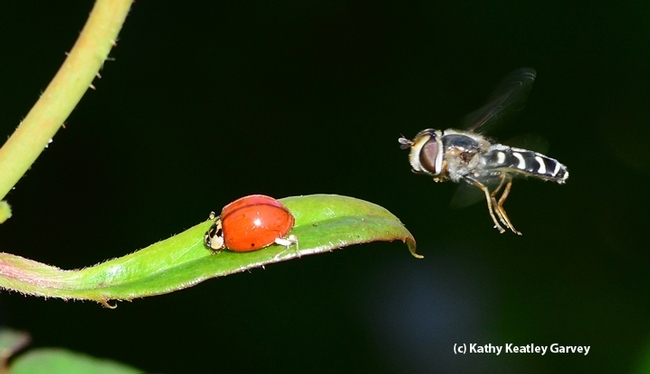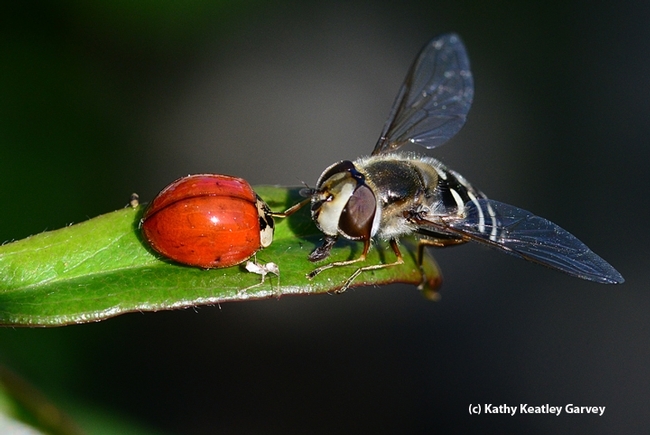It's Friday Fly Day--and time to post images of a syrphid fly.
Syrphid flies, often mistaken for honey bees, are pollinators, too.
Also known as flower flies and hover flies, syrphids hover over a flower before touching down. "Most species are predaceous, most commonly on aphids or mealybugs," according to the UC Statewide Integrated Pest Management Program. "Some syrphids prey on ants, caterpillars, froghoppers, psyllids, scales, other insects, or mites. About 100 to 400 aphids can be fed upon by each aphid-feeding larva before it pupates, but this varies by the mature size of the syrphid relative to the aphids' size."
They are easily distinguished from honey bees because (1) bees don't hover, and (2) syrphids have only one pair of wings, while bees have two. "Their large eyes and short antenna also give them away, notes Kelly Rourke in a U.S. Forest Service article on "Syrphid Fly (Sphaerophoria philanthus). The absence of pollinium, or pollen sacs, is more difficult to see, but is another difference from a bee. Of the nearly 900 species of flower flies (family Syrphidae) in North America, most have yellow and black stripes."
Several years ago we captured images of a syrphid fly and an Asian lady beetle (Harmonia axyridis) on a rose bush in our Vacaville pollinator garden.
The scenario: Aphids were sucking plant juice on one end and secreting honey dew on the other end. The lady beetle was feasting on the aphids and getting sticky from all that honey dew.
Then along came a syrphid, a female Scaeva pyrastri, as identified by senior insect biosystematist Martin Hauser of the Plant Pest Diagnostic Branch, California Department of Food and Agriculture. It hovered over the lady beetle and then dropped down to lick the honey dew from the beetle's head.
'Twas a happy day for the lady beetle and the syrphid fly, but not so much for the aphids.
Attached Images:

